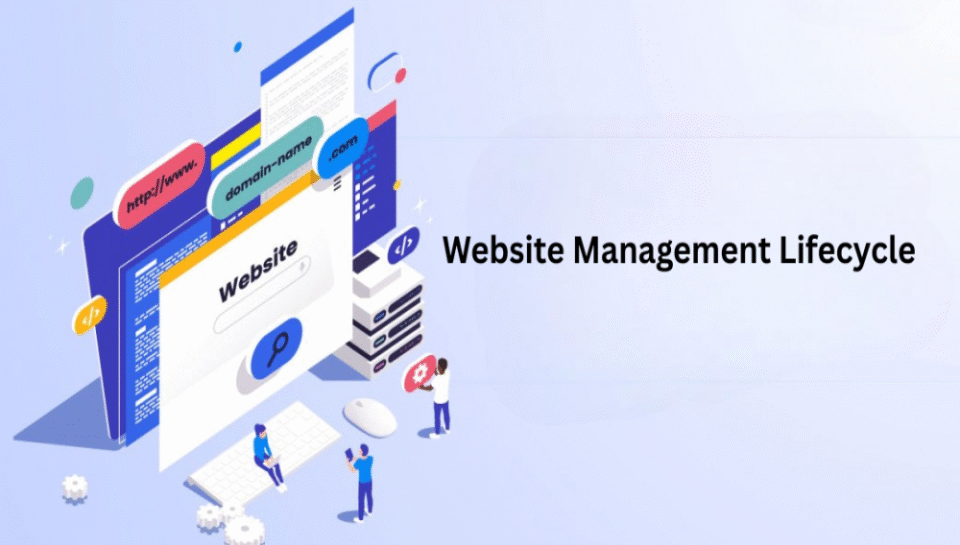
Define the typical lifecycle of website management in the Indian enterprise sector.
Introduction
In India’s enterprise sector, websites serve as critical digital assets—gateways to customer interaction, brand identity, and operational transparency. Managing a website is not a one-time effort but an ongoing cycle that ensures consistent performance, compliance, security, and alignment with evolving business goals. The typical website management lifecycle followed by Indian enterprises reflects a structured and strategic approach that integrates planning, execution, optimization, and adaptation to technological and market trends.
1. Requirement Analysis and Goal Setting
The lifecycle begins with identifying the website’s purpose and defining business objectives. Enterprises in India outline specific goals such as lead generation, customer engagement, e-commerce enablement, or informational outreach. Stakeholders collaborate to determine target audiences, feature requirements, and KPIs that will guide the website’s architecture and strategy.
2. Planning and Scope Definition
Once goals are set, a comprehensive project plan is developed. This includes deciding on the site structure, selecting CMS platforms (e.g., WordPress, Drupal), defining content needs, choosing domain and hosting services, and establishing timelines. Indian enterprises often emphasize alignment with brand guidelines and regulatory requirements during this stage.
3. Design and User Experience (UX)
Design teams create wireframes and UI mockups focused on user experience, responsiveness, and accessibility. In India’s diverse digital market, enterprise websites often include multilingual capabilities, mobile-first design, and localization features. Aesthetic appeal is balanced with usability, ensuring intuitive navigation and brand consistency.
4. Development and Integration
Web developers bring the design to life using HTML, CSS, JavaScript, and back-end frameworks. Enterprises often integrate CRM systems, payment gateways, ERP platforms, and third-party tools for analytics and customer service. Indian enterprise websites also incorporate Aadhaar, UPI, and regional payment systems where relevant.
5. Content Creation and Optimization
Content teams develop original, SEO-friendly content tailored to the enterprise’s audience. This includes web pages, blogs, media assets, and downloadable resources. For Indian enterprises, content often needs to support multiple languages and be culturally contextualized for different regions and user segments.
6. Testing and Quality Assurance (QA)
Comprehensive testing is performed across browsers, devices, and screen sizes to ensure compatibility and functionality. QA teams check for bugs, broken links, loading speeds, and mobile responsiveness. Security audits, accessibility checks, and compliance with Indian IT laws and global standards (e.g., GDPR) are integral at this stage.
7. Deployment and Go-Live
Once testing is complete, the website is launched on a live server. Indian enterprises typically coordinate soft launches or pilot runs to gather early feedback before full deployment. DNS settings are configured, backups are initialized, and emergency rollback protocols are established.
8. Monitoring and Performance Analytics
Post-launch, the website is continuously monitored using tools like Google Analytics, Search Console, and enterprise-grade dashboards. Key metrics such as traffic sources, user behavior, bounce rates, and conversions are tracked. Enterprises in India also monitor regional engagement data to refine their localization strategies.
9. Maintenance and Updates
Website management includes regular updates to content, security patches, plugin upgrades, and system backups. For Indian enterprises, this stage often involves periodic audits for security, legal compliance, and SEO refreshes to maintain competitiveness in the search ecosystem.
10. Scaling and Innovation
As the enterprise grows, the website evolves. New features, sections, and integrations are added. Cloud hosting is often scaled, UX is refined, and AI-based personalization is introduced. Enterprises may also begin adopting emerging tech like Progressive Web Apps (PWAs), voice interfaces, or chatbot support to enhance user engagement.
Conclusion
The website management lifecycle in Indian enterprises is a dynamic, iterative process that reflects a blend of global best practices and local needs. It spans the full arc from ideation to innovation, with each phase supporting the enterprise’s strategic vision. By embracing structured management practices, Indian businesses ensure their websites remain impactful, secure, and scalable in the fast-moving digital environment.
Hashtags
#WebsiteLifecycleIndia #WebManagement #IndianEnterprises #DigitalStrategyIndia #WebsiteDevelopment #WebsitePlanning #EnterpriseWebsites #WebDesignIndia #UXDesignIndia #ContentStrategy #WebsiteTesting #WebAnalyticsIndia #WebsiteDeployment #WebSecurityIndia #CMSIndia #DigitalTransformationIndia #SEOIndia #MultilingualWebsites #PWAIndia #WebsiteUpdates #CloudHostingIndia #BusinessWebsites #AIWebManagement #IndianDigitalEconomy #WebsiteOptimization





